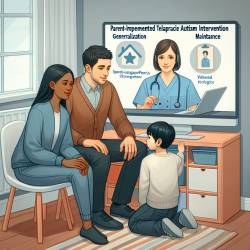Introduction
The World Health Organization's (WHO) 2020 guidelines on physical activity and sedentary behaviour provide a comprehensive framework for enhancing health outcomes across various populations, including children. As practitioners providing online therapy services to schools, integrating these guidelines can significantly improve the effectiveness of interventions, especially for children. This blog will explore how these guidelines can be applied to online therapy practices, encouraging practitioners to adopt a data-driven approach to enhance therapy outcomes.
Understanding the Guidelines
The WHO 2020 guidelines emphasize the importance of regular physical activity and the reduction of sedentary behaviour for all age groups. For children and adolescents, the guidelines recommend an average of 60 minutes per day of moderate-to-vigorous intensity aerobic physical activity. This activity level is associated with improved physical fitness, cognitive outcomes, and mental health, including reduced symptoms of depression.
Application in Online Therapy
Integrating these guidelines into online therapy sessions can be transformative. Here are some strategies:
- Incorporate Physical Activity: Encourage short, interactive physical activities during therapy sessions. Activities like guided exercises or dance breaks can help meet the recommended physical activity levels.
- Educate on Sedentary Behaviour: Use therapy sessions to educate children and their families about the risks of prolonged sedentary behaviour and the benefits of regular physical activity.
- Set Achievable Goals: Work with children to set realistic physical activity goals. Use data to track progress and adjust goals as needed to maintain motivation and engagement.
Encouraging Further Research
While the guidelines provide a solid foundation, they also highlight areas needing further research, particularly concerning the specific impacts of different types and intensities of physical activity on various health outcomes. Practitioners are encouraged to contribute to this growing body of research by documenting and sharing their findings on the effectiveness of integrating physical activity into therapy sessions.
Conclusion
By incorporating the WHO 2020 guidelines into online therapy practices, practitioners can enhance the health outcomes of children. These guidelines offer a data-driven approach that aligns with the goal of improving physical, cognitive, and mental health outcomes through regular physical activity and reduced sedentary behaviour.
To read the original research paper, please follow this link: World Health Organization 2020 guidelines on physical activity and sedentary behaviour.










